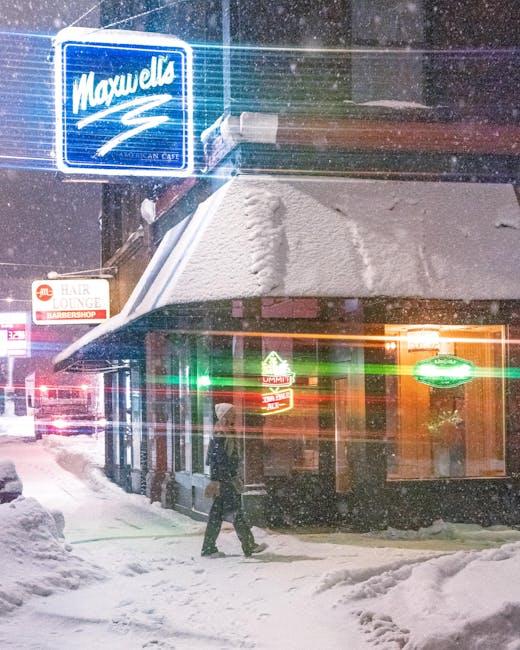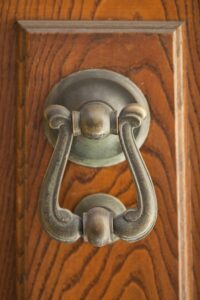When seconds count and every doorway becomes a potential lifesaver, understanding the legal landscape surrounding panic bars and emergency exit locks in Minnesota is more than just compliance-it’s a commitment to safety. These seemingly simple mechanisms play a critical role in ensuring swift and secure evacuations during emergencies, yet the state’s regulations governing their installation and maintenance are often overlooked or misunderstood. In this article, we’ll unlock the key facts about Minnesota’s legal requirements, shedding light on what building owners, managers, and safety professionals need to know to keep both code inspectors and occupants secure. Whether you’re navigating new construction, renovations, or routine inspections, knowing the rules of the exit game can make all the difference.
Table of Contents
- Panic Bars and Emergency Exit Locks Overview in Minnesota
- Detailed Compliance Standards for Commercial Buildings
- Installation Guidelines and Safety Best Practices
- Inspection and Maintenance Protocols to Ensure Reliability
- Recommendations for Meeting Minnesota Fire Code Requirements
- Q&A
- Concluding Remarks

Panic Bars and Emergency Exit Locks Overview in Minnesota
In Minnesota, the installation and maintenance of panic bars and emergency exit locks are governed by strict safety codes designed to ensure quick and safe egress during emergencies. Commercial buildings, schools, theaters, and other public venues must comply with standards that prioritize occupant safety without compromising security. Panic hardware must allow doors to be opened from the inside without the use of a key or any special knowledge, enabling a swift exit in critical situations. These requirements not only save lives but also help businesses avoid costly legal repercussions.
Key legal points in Minnesota include:
- Panic bars are mandatory on doors serving as exit points in any space with an occupant load of 50 or more.
- Emergency exit locks must never restrict the door from being opened when the building is occupied.
- The hardware must comply with both the Minnesota State Building Code and the NFPA 101 Life Safety Code.
- Routine inspections and maintenance are required to ensure functionality at all times.
| Building Type | Occupant Load Trigger | Panic Bar Requirement |
|---|---|---|
| Schools | Any exit | Mandatory |
| Theaters | 50+ | Mandatory |
| Offices | 100+ | Recommended |
| Retail Stores | 50+ | Mandatory |

Detailed Compliance Standards for Commercial Buildings
Commercial buildings in Minnesota must adhere to strict guidelines regarding panic bars and emergency exit locks to ensure rapid evacuation during emergencies. These devices are not merely accessories but critical safety components mandated by state fire codes and building regulations. Panic bars, often referred to as crash bars, are required on exit doors that serve large occupant loads, enabling occupants to exit swiftly without the need for keys, tools, or special knowledge. Minnesota law emphasizes that these bars must be installed at a height between 34 and 48 inches from the floor for optimal accessibility and ease of use.
Furthermore, emergency exit locks must comply with ANSI/BHMA standards, ensuring they release immediately upon any force applied. The state also stipulates the use of lever-style handles over knobs for emergency exits, enhancing ease of operation. The table below outlines some essential requirements for Minnesota commercial buildings concerning panic hardware:
| Requirement | Specification |
|---|---|
| Panic Bar Height | 34″ – 48″ from floor |
| Operation Force | Less than 15 lbs |
| Lock Type | Fail-safe, immediate release |
| Handle Style | Lever handles preferred |
| Signage | Clearly marked and illuminated |

Installation Guidelines and Safety Best Practices
Ensuring the proper installation of panic bars and emergency exit locks is critical to comply with Minnesota’s legal framework and to safeguard building occupants effectively. It’s essential to adhere to manufacturer specifications and local fire codes, as improper setup can hinder emergency egress rather than facilitate it. When installing, verify that the panic bars are mounted at a height that aligns with ADA requirements, generally between 34 to 48 inches from the finished floor. The mechanism should operate smoothly with a simple push, without requiring any special knowledge or effort. Additionally, use corrosion-resistant materials for environments prone to moisture, ensuring long-term reliability and safety.
- Test the hardware monthly to confirm optimal functionality.
- Maintain clear signage indicating the exit route equipped with panic hardware.
- Ensure no obstacles block the emergency exit path at any time.
- Regularly train staff on the proper use and inspection of emergency exit systems.
Safety is a continuous commitment, and part of it involves periodic inspections and maintenance of panic bars and emergency exit locks. Including professionals trained in fire and building code compliance during installation helps catch potential legal or functional issues early. Reference this basic checklist to maintain your system’s integrity:
| Task | Frequency | Priority Level |
|---|---|---|
| Visual inspection for wear and tear | Monthly | High |
| Lubricate moving parts | Every 6 months | Medium |
| Verify signage visibility and condition | Quarterly | High |
| Emergency functionality test | Annually | High |

Inspection and Maintenance Protocols to Ensure Reliability
Regular checks and professional maintenance are crucial in keeping panic bars and emergency exit locks functional, compliant, and ready for immediate use. Facilities managers should implement a scheduled inspection routine that includes assessing the mechanical integrity, lubrication of moving parts, and verifying that alarms or signals connected to these devices are operational. Using a comprehensive checklist during each inspection ensures that components such as push bars, latches, hinges, and locking mechanisms meet the stringent Minnesota legal requirements and industry safety standards.
Best practices for maintenance include:
- Monthly functionality tests to confirm smooth operation without sticking or jamming.
- Immediate repair or replacement of worn or damaged parts to avoid reliability risks.
- Documenting each inspection and maintenance activity to ensure legal compliance and create an audit trail.
- Training staff to recognize early signs of wear and report them promptly.
| Inspection Item | Frequency | Actions |
|---|---|---|
| Push Bar Function | Monthly | Test for smooth release and reset |
| Locking Mechanism | Quarterly | Lubricate and tighten fittings |
| Alarm Systems | Monthly | Verify activation and sound level |
| Hardware Integrity | Annually | Replace worn elements |

Recommendations for Meeting Minnesota Fire Code Requirements
Ensuring compliance with fire codes in Minnesota means prioritizing the safety of all building occupants through proper installation and maintenance of panic bars and emergency exit locks. It’s essential to use devices that allow easy, immediate egress without any special knowledge or tools. Panic hardware should be installed according to the code specifications, typically on doors serving as primary exit routes in places of assembly, educational buildings, and certain commercial establishments. The hardware must be operable with a single, simple motion-usually a push bar-to minimize reaction time during emergencies.
To streamline your compliance efforts, consider these vital considerations:
- Test and inspect all exit devices regularly to ensure they operate smoothly and latch securely without sticking.
- Choose UL-listed components that meet Minnesota State Fire Code standards.
- Verify door and frame compatibility to guarantee proper installation and function of panic bars and locks.
- Avoid locks that require keys, codes, or special knowledge for egress.
| Requirement | Minimum Standard |
|---|---|
| Maximum opening force | 15 lbs |
| Operation method | Single action push bar |
| Location | Exit doors in assembly areas |
| Periodic testing | Quarterly |
Q&A
Q&A: Panic Bars & Emergency Exit Locks – Navigating Minnesota Legal Requirements
Q1: What exactly are panic bars and why are they important?
A: Panic bars, also known as crash bars or push bars, are horizontal bars installed on emergency exit doors. They allow occupants to quickly and easily exit a building in case of an emergency by simply pushing on the bar, facilitating rapid evacuation without the need for keys or complicated maneuvers. Ensuring their proper installation is crucial for safety and compliance.
Q2: Does Minnesota law require the installation of panic bars in certain buildings?
A: Yes, Minnesota’s building and fire codes mandate panic hardware in specific occupancy types and door locations. For example, commercial buildings, schools, healthcare facilities, and places of assembly often require panic bars on exit doors serving large numbers of people to ensure safe and swift egress.
Q3: Which codes govern panic bar requirements in Minnesota?
A: Minnesota primarily follows the Minnesota State Building Code, which adopts the International Building Code (IBC) and International Fire Code (IFC) with state amendments. These codes specify when panic hardware is required, typically for doors serving rooms with an occupant load of 50 or more persons in certain occupancy groups.
Q4: Are panic bars required on all emergency exit doors?
A: Not necessarily. Panic bars are generally required on exit doors that serve high occupant loads or specific occupancies, such as educational or assembly spaces. Lower occupancy or residential buildings typically do not have the same stringent requirements but must still meet safety standards.
Q5: Can emergency exit doors be locked with conventional locks?
A: Emergency exit doors in Minnesota must allow free egress without special knowledge or tools. Conventional keyed locks that impede exit are generally prohibited. Panic bars or other approved emergency exit locks that open with a simple push are required to ensure rapid escape.
Q6: Are there any unique Minnesota amendments to emergency exit locking requirements?
A: Minnesota may have amendments clarifying use in healthcare settings, correctional facilities, or specific assembly areas, where additional locking or delay devices might be allowed under strict conditions. These ensure a balance between safety, security, and emergency access, so consulting state-specific regulations is recommended.
Q7: What maintenance or inspection requirements apply to panic bars and emergency exit locks?
A: Minnesota requires regular inspections and maintenance to ensure exit hardware functions correctly at all times. Non-functioning panic bars or locked doors that hinder emergency egress can result in violations and fines, highlighting the importance of routine checks by building owners.
Q8: What should building owners do to stay compliant with Minnesota’s panic bar laws?
A: Owners should familiarize themselves with the Minnesota State Building Code and local fire codes, consult with certified fire safety professionals, and schedule periodic inspections. Upgrading or repairing panic hardware promptly after any issues ensures safety and code compliance.
Q9: What are the consequences of non-compliance with emergency exit hardware laws in Minnesota?
A: Non-compliance can lead to serious penalties including fines, citations, and potential closure orders from fire or building authorities. More importantly, it increases the risk of injury during emergencies, which could result in legal liability.
Q10: Where can building professionals and owners find more detailed guidance on Minnesota’s emergency exit requirements?
A: The Minnesota Department of Labor and Industry website provides access to the State Building Code and fire safety regulations. Additionally, local fire marshals and certified safety consultants can offer tailored advice and updates on compliance.
By understanding Minnesota’s legal requirements for panic bars and emergency exit locks, building owners and managers ensure not only regulatory compliance but also safeguard lives during emergencies.
Concluding Remarks
In the ever-evolving landscape of safety regulations, understanding Minnesota’s legal requirements for panic bars and emergency exit locks isn’t just about compliance-it’s about creating secure spaces where lives can be protected when every second counts. Whether you’re a building owner, manager, or safety professional, staying informed ensures your exits serve their vital purpose without legal pitfalls. By blending thoughtful design with the state’s mandates, Minnesota continues to set a standard where safety meets responsibility-because in emergencies, clear, accessible exits aren’t just features; they’re lifelines.




